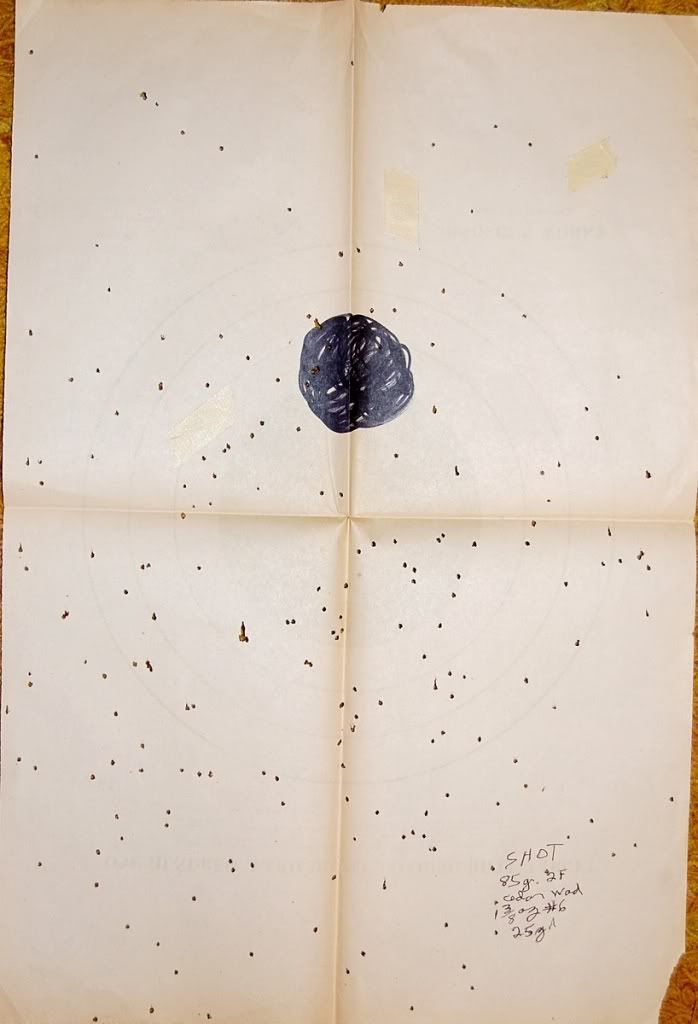Any edition of Lyman's Shotshell Reloading Manual has tables in it that give MV, and down range velocities at 20,40,&60 yds. Additional tables give Pellet energy with different sized shot pellets going at different velocities at the 4 distances, and tables that give you Time in flight, and drop in flight for the different size shot pellets.
The tables were created for use with modern, Smokeless powder loads, BUT, they can be used with slower ML velocities, too. Just find the slower BP velocities on the table, and use the figures to the right on the chart to give you velocities, energy, time in flight, and drop in flight for your particular load. :hmm: Most BP shotgun loads leave the muzzle of your shotgun UNDER the SPEED OF SOUND( 1135 FPS). MOST OF THE SMOKELESS POWDER LOADS ON THE CHART leave the muzzle at velocities ABOVE the speed of sound, but LOSE all that extra velocity within the first 20 yards! :shocked2:
WHICH BEGS THE QUESTION, why are modern shooters even bothering with such high velocity, heavy recoiling loads( whatever mass moves forward generates an equal and opposite force going backwards) when the velocity does not really carry down range very far, but does work to open up patterns??????
Basically, the answer to the question is in the table of time in flight, as the faster MV still get the loads to the target sooner. The idea is that if you get the pattern out too the target faster, it doesn't have time in flight to open the pattern up too much. Choke helps to show the spreading of the shot patterns during flight.
With BP, you can't get the velocities that smokeless powder gives. You can delay the opening of the shot pattern by using shot cups, and choke to delay the process, even with the slower times in flight. However, the only way to get down range pellet energies that are similar to what is obtained with smokeless powder loads is by INCREASING the size(diameter), and weight of the pellets you fire down range.
Because a MLer shotgun is NOT restricted by the length of shotshell casings to the amount of shot that can be loaded, you can add more shot, of a larger diameter, to give you more pellets in the pattern, than is possible shooting modern shotshells. :hmm: :grin: :thumbsup:
The other advantage that MLing shotguns have is that you can load a large gauge shotgun with lighter loads in the field to "customize " your load for the game being hunted. Y0u don't have to always shoot the heaviest load your gauge can manage. A 28 or 20 gauge load in most 12 gauges is light on recoil, and usually produces better patterns than you get shooting those same loads from from a 28 or 20 gauge shotgun,respectively. This makes a 16,13, 12, or 10 gauge MLing shotgun a much more useful "tool" to the "One-Gun" shooter. :hmm: :idunno: :hatsoff:





